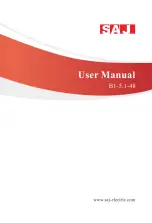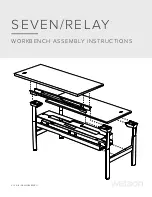
388
K2 Storage System Instruction Manual
July 3, 2007
Chapter 11 Administering and maintaining the K2 Storage System
5. Click
OK
to save settings and close.
6. If you are working on a Level 3 RAID chassis with two RAID controllers, repeat
this procedure except in the K2 System Configuration select the K2 Media Server
connected to the other RAID controller.
7. Restart the RAID chassis to put SNMP configuration changes into effect.
Working with Ethernet switches
Use the following sections when designing, configuring, or servicing a Gigabit
Ethernet switch that is part of an existing K2 Storage System.
Design considerations for Ethernet switches
The following information was qualified using the HP ProCurve switch. You must
use the HP ProCurve switch for iSCSI traffic. However, for control and FTP/
streaming traffic, it is allowed to use a different brand of switch, such as a Cisco
Catalyst switch, if required by your site. If you are using a non-HP switch, apply the
information accordingly. Refer to the documentation you received with the switch as
necessary.
The primary factors that influence the number and configuration of switches on a K2
Storage System are as follows:
• Redundancy — Non-redundant K2 Storage Systems have only one media (iSCSI)
network and can operate with a single switch. Redundant K2 Storage Systems have
an “A” media network and a “B” media network and require at least two switches,
so that the A network and the B network never share the same switch. Media traffic
does not cross between an “A” switch and a “B” switch, so if there are Inter-Switch
Links (ISLs) between redundant switches, media traffic does not use these ISLs.
• Separation of iSCSI traffic — Media (iSCSI) traffic must be kept separate from
control traffic, FTP/streaming traffic, and any other type of traffic. The
recommended way to provide this separation is to configure each switch to have
two VLANs, with half the switch’s ports on each VLAN. The media (iSCSI) traffic
uses one VLAN and all other traffic uses the other VLAN. This “other” traffic can
include both FTP and control traffic, as it is allowed that they be on the same
VLAN. On very large multiple switch systems, designers with sufficient
knowledge can use other options for providing the separation of iSCSI traffic, such
as using one switch or fabric exclusively for media traffic and another switch or
fabric exclusively for non-media traffic. Also refer to
and the “Networking for level …” section in the chapter for your level
of K2 Storage System earlier in this manual for more information about IP
addresses, subnets, host tables, and other networking techniques required to keep
traffic separate.
• FTP bandwidth — This is a consideration if using multiple switches that share the
FTP traffic. In this case you must use sufficient ISLs to provide the bandwidth
needed to support your FTP traffic load between switches. Only control traffic and
FTP traffic use ISLs, but since FTP traffic is more variable and has potentially
higher bandwidth needs, it is the primary consideration when designing ISLs. You
do not need to consider iSCSI bandwidth on ISLs.
Using two 10 Gig ISLs to connect switches is the recommended solution for all K2
Summary of Contents for K2 BASECAMP EXPRESS
Page 1: ...K2 STORAGE SYSTEM Instruction Manual SOFTWARE VERSION 3 2 071 8461 02 JULY 2007 ...
Page 8: ...8 K2 Storage System Instruction Manual July 3 2007 Contents ...
Page 14: ...14 K2 Storage System Instruction Manual July 3 2007 Safety Summaries ...
Page 20: ...20 K2 Storage System Instruction Manual July 3 2007 Finding Information ...
Page 24: ...24 K2 Storage System Instruction Manual July 3 2007 Chapter 1 Product Description ...
Page 67: ...July 3 2007 K2 Storage System Instruction Manual 67 ...
Page 300: ...300 K2 Storage System Instruction Manual July 3 2007 Chapter 8 Overview of K2 Storage Tools ...







































